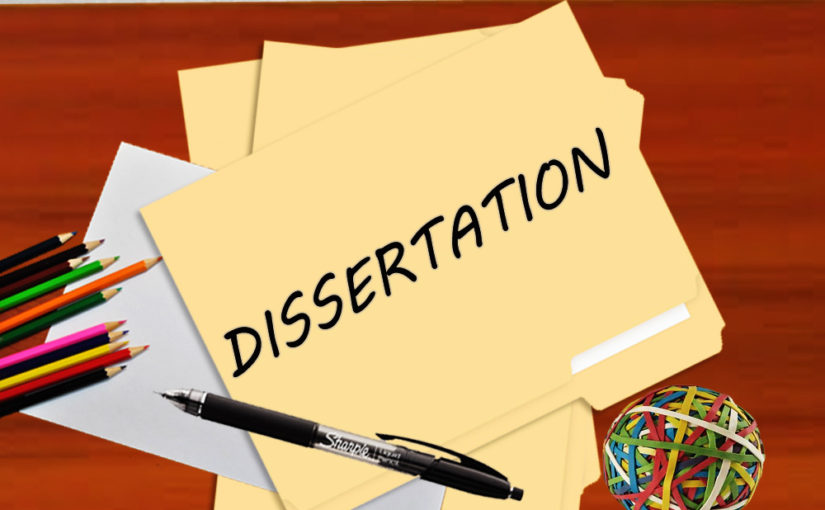Dissertation writing is widely regarded as one of the most respected and credible academic assignment submissions amongst the education fraternities across the globe. It is primarily because in a dissertation, each line is cemented on concrete facts and information and it will remain light years away from any sort of controversies or fallacies. These academic or research drafts are tirelessly prepared with immense focus, patience and invested with years of knowledge and understandings.
GET HELP INSTANTLY
Place your order to get best assignment help
(since 2006)
Earlier, dissertation writing, and submission was an integral part of PhD and doctorate programs only. But nowadays, it is frequently demanded from the students as a part of master’s and bachelor’s curriculum as well. Dissertation is possibly the longest form of writing that we might ever encounter, and the most intimidating aspect is starting its draft in correct order. But if we are well versed in the dissertation writing structure, then we can not only commence the draft in style but also end it up with a bang!
Introduction
What we write in our dissertation submission certainly do matter, but how we are writing is equally important if not more. In this piece of writing, we are going to provide dissertation help to realize exactly what we should incorporate as well as where we should incorporate the same. Here, we are going to shed light over each component that collectively form the dissertation structure. As we all are well familiar with the fact that not all forms of dissertations are structured in the same manner. The structure and the form of research that would be required is always dependent upon our location, topic, discipline, and approach.
For instance, the dissertation structure in a subject like Humanities is often represented in the form of a long essay, developing an overall sense of argument revolving around the central thesis. The chapters are organized around diverse case studies or themes. On the other hand, while conducting empirical research in the subjects like sciences and social sciences, the dissertation is going to feature all the components that we are about to discuss below. In certain cases, they are dealt in a separate chapter, while in others we are required to combine them as per requirement. For example, in specific types of qualitative social science, the discussion as well as the results are woven together than being dealt separately.
The dissertation structure also tends to vary while writing for different fields or countries. For instance, some of the universities located in certain parts of the world recommend that ‘the conclusion’ shall always come prior to ‘the discussion’.
Structuring the Dissertation in a Standard Form
Now, we are going to look at the standard elements that are an integral part of any form of standard dissertation writing pattern. These are the most common yet critical elements that are recommended and enforced by the experts even when we are seeking online dissertation help from the writers of an authorized agency. As per the university policies and the academic pattern followed there, there might be a big change in the structural order, but it would remain the same. That is the reason why, prior to the commencement of our dissertation writing, we should always heed to the guidelines of the department and timely consult with the supervisor.
01_Title Page
The first and the foremost page of our assignment document shall feature the title of the dissertation, along with name, department, degree program, institution, and the date of submission. It may or may not include the student ID number, the name of the supervisor, along with the logo of the university. The formatting of the dissertation title page is required to be done as per the program instructions or university policies. It might tend to vary as per one program/ university to another accordingly.
02_Acknowledgements
The section of acknowledgements is generally considered to be optional and provides us the discrete space to express our gratitude to all those who helped us finish the dissertation work. This might feature our supervisors, research participants, family or friends who extended their support at the time of need.
03_Abstract
It is basically a short form of summary reflecting what our dissertation work is all about. It is usually featured in 150 to 300 words and it is expected that we fill out this page at the very end, once we are done with the rest of the dissertation. In an ideal form of abstract writing, it is essential that we incorporate:
- The state of the main topic as well as the aims of our research.
- Describing the methods that we used.
- Summarizing the key points of our results.
- Stating down our conclusion.
Though the process of abstract writing is very short, it is the foremost segment (and probably the only segment) that the people would be interested to read. That is the reason why, it is critical that we get it right. For the students who are struggling to pen down a strong abstract, it is suggestive to seek help from a trusted agency offering reliable dissertation writing services.
04_Table of Contents
We are required to arrange the table of contents in a very careful sense by listing all our chapters and their subheadings along with their respective page numbers. The contents page of the dissertation gives the reader the exact overview of the structure as well as easy navigation across the entire document draft.
All the vital segments of our dissertation work shall be incorporated in the contents table, including the appendices. The table of content can automatically be generated in a Word file if we are using the heading styles.
Are you keen to learn dissertation writing right from the word one? Learn about the secret art step by step by going through the below link and bring out the sheer difference in your next dissertation –
 MUST READ: How to prepare dissertation assignment?
MUST READ: How to prepare dissertation assignment?
05_List of Tables and Figures
If our dissertation work is revolving around many tables and figures, then it is the time to give a serious thought about itemizing them correctly in a numbered list. If we are working it down on a Word file, then we can automatically generate the list with the help of Insert Caption feature available in the document.
06_Abbreviation List
In case our dissertation features many abbreviations, then it would be appropriate to include them in a separate alphabetized list of abbreviations. It is always helpful for the readers to easily refer down the page and interpret the exact meanings.
07_Glossary
We cannot always expect our readers to carry the expertise to understand highly specialized, sophisticated, and technical terms that we feature in our dissertation test. Here, one of the good and highly recommended ideas is to include a glossary. A glossary is basically a list of terms that are arranged in an alphabetical order and explain each term with a brief definition of description.
08_Introduction
In this portion of our draft, we introduce the reader to the topic, relevance, and purpose of the dissertation. It provides a brief insight of what the reader can expect out of the rest of the dissertation. Our introduction portion shall feature:
- Establishing our topic of research, providing essential background information to effectively contextualize our work.
- Narrowing down the focus as well as defining the scope of the research.
- Discussing the state of the existing research that has been done on the topic and displaying the relevance of our work in terms of a broader debate on the problem.
- Clearly stating down our research questions and objectives.
- Providing an overview of the dissertation structure.
Please note that all the components associated with introduction shall remain crystal clear, relevant, and purely engaging to the reader. Once he or she passes through the ultimate line of our introductory paragraph, there ought to be a clear understanding of why, what, and how of our research. The dissertation introduction is a critical part of our entire draft submission and it cannot be compromised under any circumstances. If you would like to get an expert intervention, then never hesitate to go for paid dissertation help from a credible agency.
Wish to get premium dissertation writing help by sitting from the safety of your home amid pandemics? Click on the below link and get your dissertation order delivered online safely at home during COVID-19 crisis.
 MUST READ: Get Top Dissertation and Research Paper Help Amid Pandemic from the Safety of your Home
MUST READ: Get Top Dissertation and Research Paper Help Amid Pandemic from the Safety of your Home
09_Theoretical Framework/ Literature Review
Prior to the commencement of the research, it is essential for us to conduct a proper literature review to attain an in-depth understanding of the academic work that has already been done on the given topic. That means,
- Gathering and assimilating the sources (e.g., journal articles and books) and picking up the most pertinent ones.
- Critically analyzing and interpreting each source.
- Drawing the points of connections between them (e.g., patterns, themes, conflicts, and gaps) to make a genuine point presentable.
In the literature review section or chapter of our dissertation, we should not merely summarize the existing studies, but also develop a coherent argument and structure leading up to a clear justification or basis for our own research. For instance, it might focus on showing how our research:
- Addressing the gap in the concerned literature.
- Taking up a new methodological or theoretical approach to the topic.
- Advancing to a theoretical debate.
- Proposing a resolution to an unresolved issue.
- Building on and strengthening the existing study or knowledge with the help of new data.
The literature review primarily becomes the foundation for a theoretical framework, where we can define and analyze the key theories, models and concepts framing our research. In the given section, we can respond to the descriptive research questions dealing with the association between the concepts or the variables.
10_Research Methodology
The research methodology section or chapter describes how we are conducting our research, facilitating our readers to access its validity. In standard terms, it should feature:
- The overall type and approach of the research (for e.g., quantitative, qualitative, ethnographic, experimental, etc.).
- Our methods of data collection (for e.g., surveys, interviews, archives, etc.).
- The elaborative details of when, where and with whom the ground research took place.
- Our methods of analyzing the data (for e.g., discourse analysis, statistical analysis).
- The materials and tools employed (for e.g., lab equipment, computer programs).
- A discussion about the obstacles that we have faced while conducting the research and how we surmounted them.
- A justification or evaluation of our methods.
Our aim in the research methodology section of our dissertation is to precisely report what we did, along with convincing the reader that we have opted for the best approach to answer the research questions or objectives. Research methodology is the backbone of any dissertation work, that is why, taking dissertation homework help from a professional agency will make sure that we execute this segment of the assignment with perfection.
Wish to get access to the best dissertation writing services that can decisively transform your career? Click on the below link and learn all you need to know!
 MUST READ: Best Dissertation Writing Services That Your Career Deserves
MUST READ: Best Dissertation Writing Services That Your Career Deserves
11_Results
Next, we are required to report the results of our search. We can structure this segment around hypothesis, sub-questions, or themes. In certain disciplines, the results segment is separated from the discussion in a strict order, while in the others the concerned two are combined. For instance, in the qualitative methods such as ethnography, the data presentation is often woven together with the discussion and the analysis.
However, in experimental or quantitative research, the results are required to be presented in a separate order prior to the discussion on inferences.
- Concisely state every relevant outcome, including the relevant descriptive statistics (e.g., standard deviations, means) as well as inferential statistics (e.g., p-values, test statistics).
- Stating in a brief order how the result is associated to the findings of the question or whether the proposed hypothesis supported or not.
- Mention the figures and tables, in case they can help the reader understand the results in a better sense.
- Reporting all the results that are pertinent to our research questions, including those that did not match up to our expectations.
- Never include subjective speculation or interpretations.
Besides, the additional data (including full questionnaires, raw numbers, and interview transcripts) can be incorporated in an appendix. Just get in touch with the right dissertation help agency to make the submission of the entire draft in a correct order.
12_Discussion
The discussion is the section of our assignment where we explore the meaning as well as the implications of our results with respective to our research questions. Here, it is anticipated out of us that we shall interpret all the availed results in detail, discussing whether they are at par to our expectations or not. Additionally, how well they can fit within the framework that we have built in the earlier chapters.
- Providing our interpretations: what do the concerned results mean?
- Exploring the implications: why the concerned results really matter?
- Acknowledging the limitations: what is that the derived results cannot tell us?
In case, any of the results turned out to be unexpected, it is our job to offer the explanation why this might be. It is always a good and a considerable idea to consider the alternative interpretations of our data. All the discussions are required to refer to the relevant sources showcasing how our results deemed fit to the existing paradigm of knowledge.
13_Conclusion
The prime motto of dissertation conclusion is to concisely answer the key research question, leaving the concerned leaders with an absolute understanding of our central argument as well as emphasizing upon what our research has contributed to. In certain academic conventions, the conclusion is provided in a short section that appears prior to the discussion segment. First, we are directly required to state our overall conclusions, then we can discuss as well as interpret their meaning.
In the other contexts, the conclusion is referred to the final chapter in which we wrap up our dissertation along with the final reflection of what we have found. This form of conclusion sometimes also incorporates the recommendations for the future practice or research. In this dissertation segment, it is significant to leave the reader with a crystal-clear impression of why our research matters. What as a researcher we have contributed to what had been already known? We can take online dissertation help from the pros of the industry to conclude the assignment in the most prudent and appropriate way.
14_Reference List
Here, we must include all the details associated with all the sources that we have cited in the reference list (also termed as bibliography or work cited list). Yes, what imperative is to follow a citation style that is consistent in nature. Each referencing style has special and strict requirements regarding formatting the sources in the given reference list. The professional dissertation writing services help you cover the referencing requirements in all the common styles, including APA, Harvard, IEEE, Chicago, MLA, etc.
Interested to learn about the dissertation writing in APA style? Read the below informative blog –
 MUST READ: Thesis Or Dissertation Using APA Style
MUST READ: Thesis Or Dissertation Using APA Style
15_Appendices
The process of writing a dissertation assignment is certainly regarded as lengthy, but that does not mean we should incorporate anything more than the essential information. The key focus should always revolve around answering our research question. In case there are documents that do not fit within the main body of our dissertation (such as survey questions, interview transcripts, or tables featuring full figures) can be added in the form of appendices.
16_Editing and Proofreading
Simply making sure that all the sections are relevantly at the right place is merely the first step towards a well-written dissertation. We are required to invest a plenty of time for the sake of editing and proofreading. It is the final, yet one of the most critical steps where we can emphasize over all the potential loopholes that can plummet the chances of getting higher grades. These loopholes include spelling and grammatical errors, typos, sloppy formatting, syntax errors, etc. and are addressed before they can drag down the standard quality of our hard work.
It is our sole decision whether to proceed with self-editing and proofreading, or order paid dissertation help from professional editors and proofreaders. But it is one thing for sure, if we are seeking the assistance from the editors and the proofreaders of a professionally responsible agency, then the possibility of submitting a perfect dissertation increases tenfold.
Learn how country based services can be accessed in specific form of referencing style by clicking the below link and understand the citing style with a better insight –
 MUST READ: How to Get Dissertation Help Singapore Based on Chicago Citation Style?
MUST READ: How to Get Dissertation Help Singapore Based on Chicago Citation Style?
Conclusion
We hope that the 16 points that we have discussed above helped you avail a crystal-clear insight about the correct dissertation structure commonly applicable. There are certain amendments when introduced can bring change to certain points as per the subject, the university guidelines, or the research institute policies. It is always expected that all the dissertation assignment guidelines are carefully read in advance and the necessary changes in the structure are introduced accordingly.
In case, you wish to fully rely on the experts to access dissertation homework help that one can count on, then it is the time to visit Thoughtful Minds. Reach out here to lay down all your dissertation assignment worries once and for all!



 MUST READ:
MUST READ: 